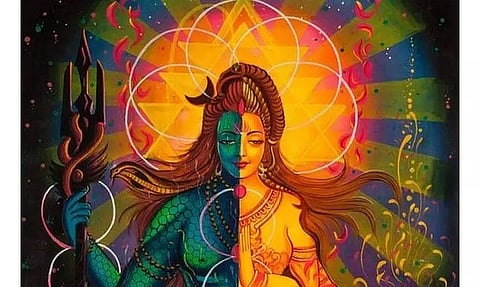
- Home
- Live Blog
- Breaking News
- Top Headlines
- Cities
- NE News
- Sentinel Media
- Sports
- Education
- Jobs

The word Tantra itself is full of mystery. To some it is a mysterious set of rituals and to some it is related to supernatural and superstitious beliefs. Many ignorant folks simply call it black magic. The word 'Tantra' in Sanskrit develop from the root 'Tan' which means 'To Weave', 'Put Forth' or 'To Compose'. So, the word 'tantra' eventually goes on to mean a system, a doctrine and a science.
It is a system of belief, practices, traditions which today's scientific studies fail to understand completely. Tantra is a world of secrets. Those who fail to understand or gain access to its process, mostly out of ignorance, term it as a bogus phenomenon and superstition. The one who gets to know even a single secret about this world becomes so intrigued that she /he develops a deep interest for it. That is the beauty of tantra. The proverb ''Grapes are sour" is completely applicable for the ignorant ones.
Most people relate tantra to some mysterious/horrific religious rites, but this is not the complete truth. Tantra comprises of rituals and it also encompasses alchemy, medicine, ayurveda, astrology, astronomy, geography, yoga, geometry, mantras, etc. Popular Ayurvedic text 'Kashyap Samhita', 'Kumara Tantras, etc. are tantras related to study of diseases before, during and after childbirth.
A large part of tantras available today relate to religious rites and worship. Most people relate tantra to only Hinduism, but this too is not true. Tantras are found in Buddhism, Jainism, several extinct polytheistic beliefs, among others. History of tantra can officially be dated back to the Vedic age and many say that tantra birthed in the Indus Valley Civilization. The Atharvaveda is reckoned as an authoritative source of tantra today. Several Upanisads of the later Vedic age also relate to tantra. Moreover the Puranas, the KalikaPurana, the NaradiyaPurana, the SambhaPurana draw heavily from tantras.
Hindu Tantras are mostly connected to five main deities -
1. Shaiva Tantras or Shaivagams relate to Shaivism or worship of Shiva. Kashimir Shaivism, Veera Shaiva, Shaiva Siddhanta sects follows Shaivagams.
2. Shakta Tantras relate to worship of Shakti, the supreme Goddess, mostly in forms of the Ten Goddesses of Wisdom called Dasa Mahavidya. The world famous Kamakhya Temple is based on these tantras
3. Vaishnava Tantras related to worship of Vishnu and his forms. They are mainly divided into Pancharatras and Vaikhanasa. The temple of Lord Jagannath in Puri follows this tradition of tantra.
4. Ganapatya Tantras relate to Ganesha. Ucchista Ganapati Kalpa is one of the famous books related to Ganapatya Tantras.
5. Saura Tantras are connected to the visible God Sun. Although not available to the general masses, the Saura Samhita and the Sambha Purana are the best examples of the Saura Tantrik cult.
Apart from these, a sixth sect of tantra called Kumara or Skanda has a firm bond with the God of War Kartikeya or Skanda and this is mostly followed in the temples of Tamil Nadu.
Tantras, in general consist of Agamas, Nigamas, Yamalas, Damaras, Samhitas, etc. These texts divide the tantric world into three regions – Vishnukranta, Aswakranta and Rathakranta. All three regions have different sets of 64 tantras and each of these tantras are divided into two main categories- Dakshinachara and Vamachara. Dakshinachara is also called 'Right hand path' and Vamachara 'Left hand path' uses the so-called 'forbidden' things called the 'Panchamakara'(5Ms). 5Ms comprises of Madya, Mangsa, Matsya, Mudra and Mithuna. Though it seems horrific, these five things have deep meaning, revealed only to the deserving. Dakshinachara relates to the general form of worship.
Although tantra encompasses all the five tantric systems, but chiefly it relates to the Shakta tradition, such that the word 'Tantra' is almost synonymous with 'Shakta Tantra' today.
SUBHAM BARUAH
Teacher
Master's In Ancient Indian History
M.A.S. in Astrology, spiritual science and Tantra
Also Watch: